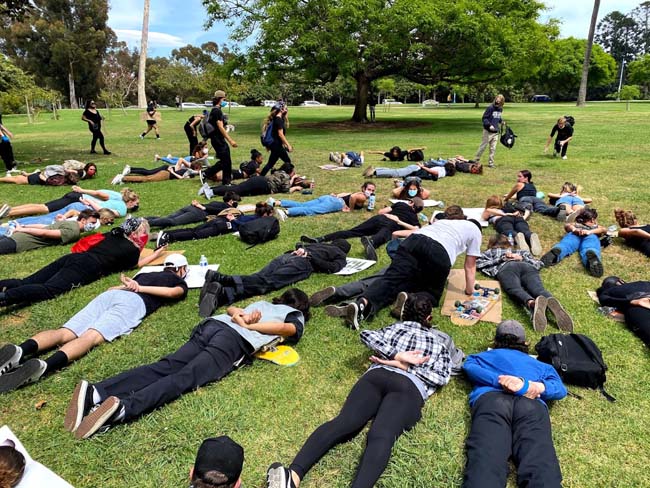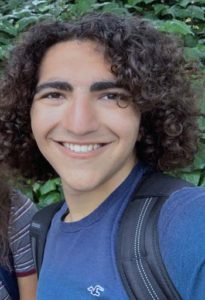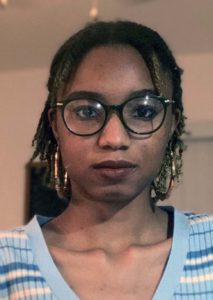
By Shor M. Masori and Kenede Pratt-McCloud



SAN DIEGO – A youth protest on Monday over the Minneapolis police killing of George Floyd offered a contrast to other protests shown on television news. It was organized and largely made up of hundreds of people who were barely in their 20s. The emphasis was to remain peaceful and have a calm demonstration. It was made clear, “We don’t want to escalate it, it’s not our fault if it escalates, but we don’t want to escalate it.”
The protest began at 1 p.m. at San Diego City College and the protesters then walked to Balboa Park. Leaders emphasized that they wanted to leave no litter and no permanent marks. They wanted things to be as peaceful as possible, especially since there were minors among the group.
Multiple chants were shouted and responded to. The most prominent one being “Say his name!” or “Say her name” followed by the crowd chanting “George Floyd!” or “Breonna Taylor!” respectively. Others included “I can’t breathe,” “No Justice, no peace. No racist police,” “Hands up, don’t shoot,” “White silence is black violence,” “Fuck Donald Trump.” Names were invoked of other victims of police brutality or white racism such as Eric Garner and Ahmaud Arbery.
Protesters could be seen walking by such Balboa Park venues as the Rueben H. Fleet Science Center, House of Pacific Relations, the Spreckels Organ Pavilion, and the San Diego Zoo.
After getting to the final location the protestors laid prone on the grass for eight minutes and forty-six seconds, the same amount of time Minneapolis Police Officer Derek Chauvin had his knee on George Floyd’s neck. Some scheduled speakers actually couldn’t attend. They were minors whose parents feared for their lives. Other publicized protests had turned violent and the parents didn’t want to risk their children’s safety in the event that this one did.
Throughout the speeches, one message was clear above all else, unity is the most important tenet. Three speakers pointed out that of all of the protests they had been to, this one was by far the most diverse. Others stressed that if someone didn’t fight for LGBT rights then they couldn’t properly fight for African American rights. The Stonewall Riots of 1969, in which demonstrations were held after a police raid on Stonewall Inn in the Greenwich Village neighborhood of New York City, were brought up as well. Mention was made of the fact that Marsha P. Johnson, a transgender black woman, was an early activist and the one to throw the first object at a police officer during their raid and subsequently spark the riots. Another major figure in Stonewall and black transgender woman, Miss Major, is currently alive and has a fund to support her basic needs and medical care following a stroke.
Some protesters invited the police who lined and guarded the roads along the line of the march to join the protest. Other protesters had issues with this, saying that good PR for the police makes it easier to cover or mask the violence being done by police. One figure the protesters agreed on was President Trump. At one point a Trump supporter praised the president while driving by and was immediately told to “fuck off” by an angry crowd.
One speaker whose parents didn’t allow her to attend the event due to safety concerns, 17-year-old Jane, messaged that, “All lives will matter once black lives matter. This echoes the sentiment of German pastor Martin Niemöller’s 1946 poem “First they came…” in which the pastor goes down the list of Nazi victims from Communists to Jews and said that he didn’t help them because he wasn’t part of their group. Eventually no one was left to help him. Smith’s sentiment goes in reverse. Once black lives are shown to matter it will give legitimacy to the fact that all lives matter, regardless of group.
Another point this protest highlighted is that the work will not be done after protesting ends or after President Trump is out of office. This problem was brought with the very first European settlers. After slavery we had segregation, now we have mass incarceration. Structural, institutionalized racism has roots so deep that it has taken generations to remedy to the point where we are now and will take generations of even more hard work to push further.
Noting that the San Diego City Council had on its Tuesday docket a proposal to raise police salaries, protesters were encouraged to call 619-541-6310 and put in access code 877861 and press the # key to be inside the conversation so they could ask that the money be put towards more pressing issues in San Diego like homelessness or fixing roads. Later it developed that item was taken off the agenda so in order to be heard people must call in and say they’re talking about a non-agenda item.
Anger was directed toward coverage of the protests by the media. For many black protesters this was their third day out. They noted that protests only became riots once the police arrived and instigated. One person said she was peacefully protesting and got tear gassed, then a car was bashed but the news flipped the two events. Speakers encouraged people to share on their social media and show what was objectively happening on the scene. This unfortunately can lead to some trouble as well. Photos of protesters along with metadata taken from their phones can make it easier to track and profile them which could be detrimental to the lives and safety of Americans practicing their constitutional right to peaceably assemble.
Black protesters had to exercise a greater level of caution. Not only do they have to be very aware of their metadata trail, they have to be aware of how they present themselves when in the presence of the police. Police are a constant presence at riots so black protesters have to be careful with the way they behave. Their entire demeanor shifts because one wrong move could cost them their lives. This doesn’t just apply to protest. Black people have to do it everyday in different settings. This behavior, code switching, becomes a defense mechanism to try and protect them from the injustices in the world.
Black people don’t have the luxury to ignore police brutality and the murders of members of their community. To be good allies and to show support, non-black people were encouraged to check on their black friends during this time. It is vital to check in on your black friends during times like this and it is just as vital to educate yourself on the issues plaguing their community.
For more information, donation links and advice if you’d like to peaceably assemble (for any reason) I here are some links: Resources and Donations
*
Shor M. Masori, a San Diegan on summer break from his studies at UC Berkeley, is a writer-photographer for San Diego Jewish World. He may be contacted via shor.masori@sdjewishworld.com Kenede Pratt-McCloud, a poet and writer, is dedicating her time and energy into helping her community.
Wonderful commentary and points to remember… how each cause raises up wit a depth of translatable understanding when others who’ve experienced persecution can work toward positive change in mutual supportive actions. Well written, Shor!
I just shared on FB.